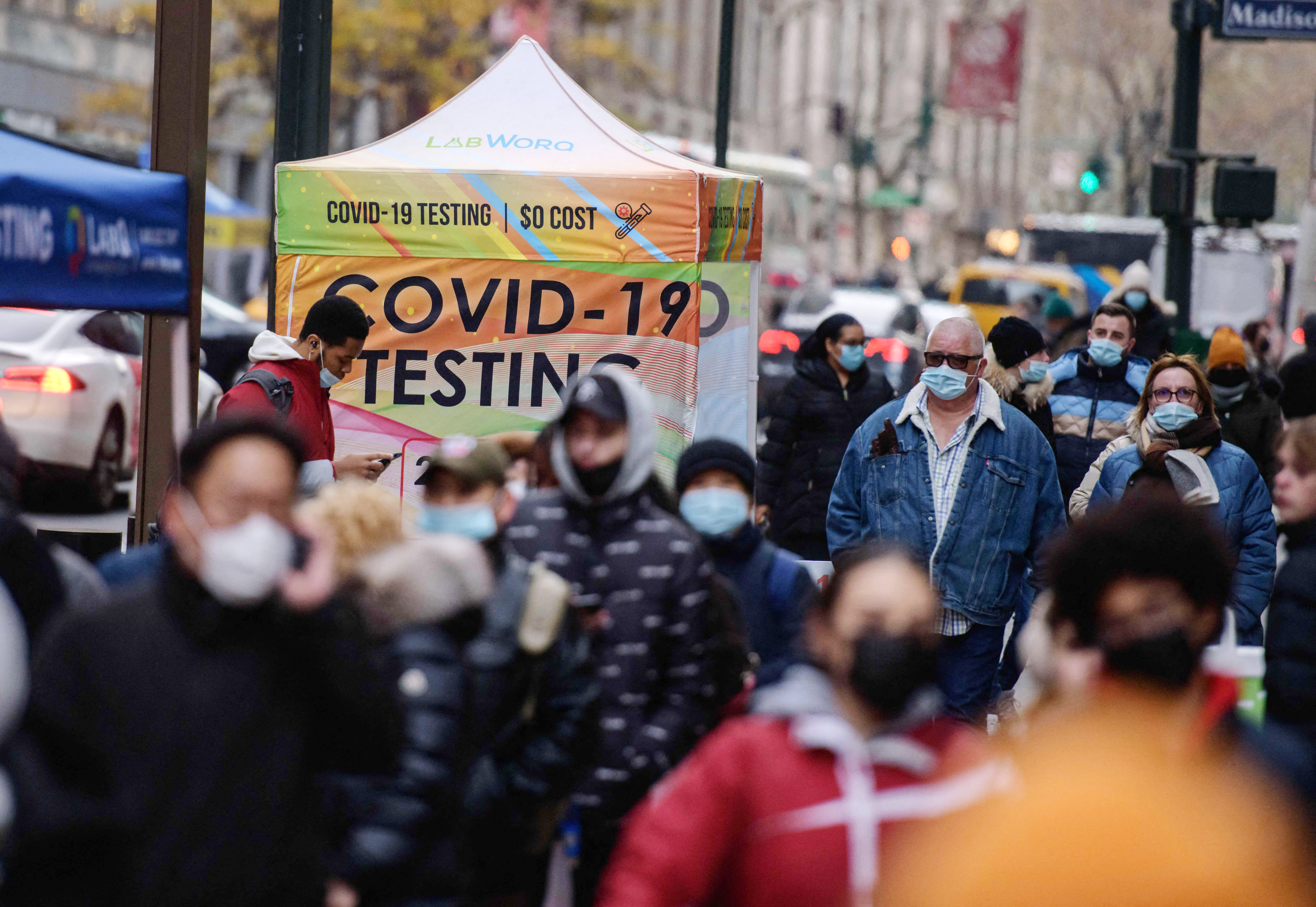4 charts show the current state of the Covid pandemic heading into 2022

A Covid-19 testing booth in New York on December 21, 2021.
Ed Jones | AFP | Getty Images
Nearly two years into the Covid-19 pandemic, reported daily infections are rising again as the omicron variant spreads rapidly around the world, in countries ranging from the U.S. and the U.K. to South Africa and Australia.
The World Health Organization labeled omicron a variant of concern. While much remains unknown about it, the WHO warned that the variant is spreading “significantly faster” than the delta strain and could change the course of the pandemic.
Still, “2022 must be the end of the Covid-19 pandemic,” Tedros Adhanom Ghebreyesus, WHO director-general, said Wednesday.
Data on the pandemic — such as confirmed cases, hospitalizations and deaths — likely underestimates the actual situation owing to limited testing, frequency of reporting and quality of data collected.
But based on available data, here are four charts that show the state of the Covid pandemic as 2021 comes to an end.
Omicron is gaining dominance
The omicron variant has been found in around 100 countries, said the WHO. The agency added that the number of Covid cases involving omicron is doubling every 1.5 to three days.
Cases are up, but deaths are down
The omicron variant triggered a new wave of infections globally. In Africa, daily confirmed cases jumped from a seven-day moving average of around 3.14 per million people at the start of November to 26.67 per million on Tuesday, according to an analysis by online repository Our World in Data.
Over the same period, the U.K.’s daily confirmed cases rose from a seven-day moving average of 603.38 per million people to around 1,280 per million people — a record high since the pandemic began, the analysis showed.
Hospitalizations among infected people have also risen in several countries. The U.S., France and South Africa were among those that recorded a rise in weekly hospital admissions over the past month because of Covid-19, according to official statistics compiled by Our World in Data.
But the average number of confirmed daily Covid deaths has been trending downward globally, an analysis by Our World in Data showed.
Scientists are still studying the severity of infection caused by the omicron variant compared with previous Covid strains.
Benjamin Cowling, an epidemiology professor at The University of Hong Kong’s School of Public Health, said omicron seems to cause “about the same severity” as delta and other variants.
“But if you’ve been vaccinated, if you’ve had an infection before, you’ve got some protection particularly against severe disease. And that means that omicron in reality looks milder,” Cowling told CNBC’s “Squawk Box Asia” on Monday.
“It looks like a milder infection because of the immunity that we’ve built up, not because the virus is particularly different in terms of its natural innate severity,” he added.
Vaccine inequality
The threat of omicron — and future variants — has highlighted the importance of vaccination in preventing severe disease, said experts. But the distribution of Covid vaccines has remained unequal.
In more than 30 countries, under 10% of the population has been fully vaccinated, according to figures compiled by Our World in Data. Many of those countries are low-income nations in Africa, the data showed.
On the other hand, high-income countries are far ahead in vaccinating their people and rolling out booster shots, according to the data.
That gap could narrow over time with billions of doses of vaccines produced each year, said Jerome Kim, director general of the International Vaccine Institute.
“We need to use the vaccines as best we can, we need to use boosters if those are indicated,” Kim told CNBC’s “Street Signs Asia” earlier this month.
“And then we need to use other methods including masks, distance and avoiding crowds and hygiene in order to reduce the total infection burden within a country.”
WHO’s Tedros said that to end the pandemic in the coming year, every country must vaccinate 70% of its population by the middle of 2022.




